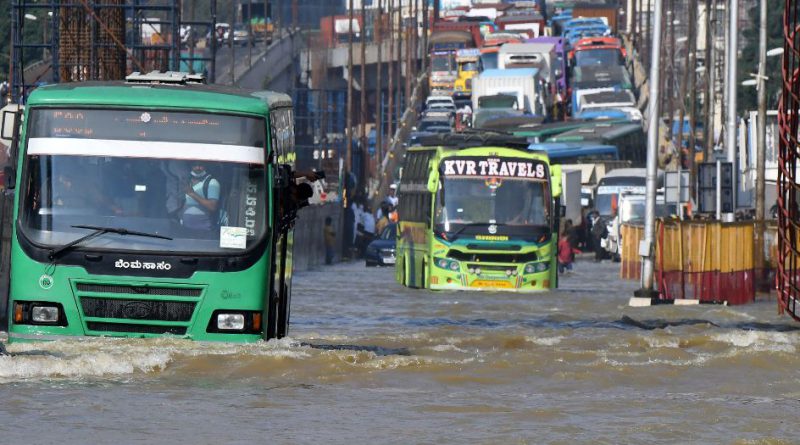Climate change, strained infra worsen flood risk in India’s Silicon Valley- report
Bengaluru (Reuters) – India’s Bengaluru city is at risk from repeated floods as unfettered urbanization and a projected surge in population, along with heavy rainfall, pose a strain on its drainage system, a report said.
The report by global property consultancy Knight Frank, estimated that authorities may need about 28 billion rupees ($338.6 million) to restore stormwater drains that have been damaged by rapid real estate development.
Bengaluru, dubbed ‘India’s Silicon Valley’ for hosting over 3,500 information technology (IT) companies, accounted for 18% of all new jobs created in the country in 2021-22, a study found last year.
The economic expansion has brought an influx of people, with the report projecting the population rise to 18 million by 2031, while the area within city limits more than tripled in 2011 to 741 square kilometres from 1995 levels.
The built-up area replaced vegetation to commensurately grow to 93% of land use in 2020 from 37% in 2002, putting “severe stress” on the natural drainage system that channelled water into the city’s interconnected lakes, according to the report.
“Due to climate change, there has also been short duration, high intensity precipitation, further accentuating risks of flooding in the city amidst limited infrastructure to contain the same,” the report said.
Citing the example of Mumbai, the report called for Bengaluru’s local authorities to formulate a master plan to reduce water-logging in flood-prone areas and ensure the free flow of stormwater.
After its heaviest rains since 2014 last September, parts of Bengaluru were submerged under waist-deep water, disrupting the IT industry and dealing a blow to the southern tech hub’s reputation



